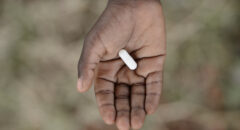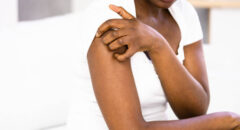
Even as the COVID-19 pandemic kept people isolated at home, sexually transmitted disease (STDs) cases increased across the United States.
Although cases fell in the pandemic's early months, infections rose again by the end of 2020, with gonorrhea, syphilis and congenital syphilis surpassing 2019 levels, according to a new U.S. Centers for Disease Control and Prevention report.
"STDs have been increasing now for maybe seven years in a row," says Dr. Leandro Mena, director of the CDC's Division of STD Prevention.
"These increases have roots in a decrease in funding public health, which has affected health departments' ability to provide screening, treatment, prevention and partner services," he adds.
Increased substance use, which is linked to social practices and socioeconomic conditions making it difficult to access services, also plays a role, Mena shares.
The new 2020 STD Surveillance Report, released April 12, found that at the end of 2020:
- Cases of gonorrhea and primary and secondary syphilis rose 10% and 7%, respectively, compared with 2019.
- Syphilis among newborns, called congenital syphilis, also rose by nearly 15% from 2019, and 235% from 2016. Primary and secondary syphilis and congenital syphilis cases continued to rise in 2021.
- Cases of chlamydia dropped by 13% from 2019.
Chlamydia accounts for the largest proportion of reported STDs. Researchers suspect the reported drop in cases owes to reduced STD screening and underdiagnosis during the pandemic, and not a true reduction in new infections. The decline in reported chlamydia cases contributed to a drop in the number of reported STDs in 2020 -- from 2.5 million cases in 2019 to 2.4 million in 2020.
RELATED: Wait…Should you give your kid condoms??
Increased rates in teens
The highest rates of new STIs were seen among gay and bisexual men and teens, the CDC reports. Too few sexually active teens are getting tested for sexually transmitted diseases (STDs), the study shows.
In all, just 20% of sexually active high school students said they were tested for an STD — now called sexually transmitted infections (STIs) — in the past year, according to researchers from the U.S. Centers for Disease Control and Prevention.
"The prevalence of sexually active high school students getting tested for an STI in the past year is relatively low, despite national guidelines," says study co-author Sanjana Pampati of the CDC's division of adolescent and school health.
The study data, from the nationwide Youth Risk Behavior Survey, were collected in 2019, before the COVID-19 pandemic, and Pampati says it's likely that the pandemic further disrupted access to and use of STI testing services.
Among the 20% who reported being tested, 26% were girls and 14% were boys.
An estimated 30% of teens are sexually active, according to the CDC. The most common STIs are human papillomavirus (HPV), chlamydia, gonorrhea, HIV and syphilis.
"More sexually active girls reported testing, especially at older ages, and boys who reported greater sexual risk behaviors, like higher number of sex partners and using drugs or alcohol before sex, also reported having been tested for an STI in the previous year," Pampati shares.
Don’t Check Your Child’s Hymen: Healthier Approaches To The Sex Talk
The importance of STI screening
Her team estimated that 15- to 24-year-olds account for half of all new STIs annually in the United States, and one in four sexually active teen girls has an STI. But, Pampati says, many doctors don't ask patients about their sexual activity or reinforce the importance of annual STI screening.
"Addressing this public health issue will require concerted efforts from multiple levels to improve access to STI testing among adolescents," she said.
Pampati suggests that doctors, clinics and parents all have a role to play in ensuring that more teens receive annual STI screening. For example, doctors working with teens can do routine STI screening that aligns with national testing guidelines, including taking a sexual history of their patients.
"Clinics and parents can ensure adolescents get private time with their doctor during preventive care visits," she adds.
And educating young people about the need for STI testing, where services can be obtained and their right to self-consent for confidential services may also help connect them to testing services, Pampati notes.
"Schools can teach adolescents about the importance of STI testing and connect young people to testing and other health services," she suggests. "Additionally, addressing barriers that we know prevent adolescents from seeking STI testing services, such as cost, transportation and stigma, are important."
Dr. David Rosenthal, medical director of the Center for Young Adult, Adolescent and Pediatric HIV at Cohen Children's Medical Center in New York City, reviewed the findings.
"This report underlines what we've seen in practice for a long time," he says.
Rosenthal says many STIs, including HIV, are seen among adolescents, which is why screening is vital.
"I always tell the young people that knowledge is power and if you know your status, you can treat something — if you don't know what's going on you can't take care of your own health," he adds.
Rosenthal notes there are a lot of very easy treatments for gonorrhea, chlamydia and syphilis.
But, he adds, if you don't know you have an STI, you run the risk of significant illness and, in young women, pelvic inflammatory disease. And, of course, you can transmit these infections to others.
"The way I look at it is that by knowing your status, you're not only taking care of your health, you're also taking care of the health of people you love," Rosenthal says.
Protecting yourself
To protect against getting an STI, Rosenthal recommends using condoms.
"It's very effective in decreasing both pregnancy, transmission of HIV and STIs. But we realize that sometimes that doesn't happen," he shares. "If that's the case, it's really important that you go see a provider and that you can get tested for STIs."
People have sex in different ways, Rosenthal adds.
"So, it's really important that when you go to your doctor, you don't just pee into a cup to look for STIs," he says. "If you have anal or oral sex, you should also get swabs for gonorrhea and chlamydia and a blood test to look for HIV and syphilis."
He recommends screening at least once a year.
"If you have a risk situation or if a condom broke or if you aren't sure about someone's status," Rosenthal says, "it always is fine to get an extra test at any time."
Many teens are reluctant to get tested for STIs, he says. It's a combination of not wanting to talk about sex with their doctor, not seeing a doctor at all, or doctors not asking patients if they are sexually active, he adds.
"There was a great quote from the Institute of Medicine saying, 'It's easier to be sexually active than to talk about sex,' and I think that's true," Rosenthal says.
Frank doctor-patient conversations are all part of making sure that people take ownership and responsibility for their sexual health, he says. He adds that it is important for patients to know that their health care provider understands not only their sexual health and activity, but also their sexual orientation and gender identity.









